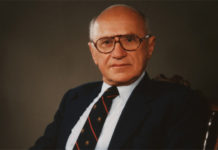Last week, Fox News ran a story about Critical Race Theory being a part of the curriculum in several of the nation’s top medical schools. This is not surprising, as CRT itself is a theoretical research model used to examine the so-called – structural systems of discrimination – which oppress minorities in America. The health care system, according to an article entitled A Call for Critical Race Theory in Medical Education, is ill-prepared to discuss complex issues like racial disparities because the existing methodologies in training physicians, like cultural competency, do not go deep enough in addressing racism in medicine. This is also not surprising as one of the major discontents of Critical Race Scholars is that multicultural education, or multiculturalism, is nothing more than what William Tate refers to as, traditional liberalism. Meaning that multiculturalism is nothing more than a do-gooder attempt to bring various cultures together, not an aggressive approach to creating new racial paradigms in pursuit of racial justice. The authors of A Call for CRT in Medical Education go on to argue that medical training traditionally focuses on health disparities as opposed to focusing on the “critical perspectives that illuminate the social, historic, and economic legacies that fundamentally create health disparities and marginalize people of color.” They call the traditional multiculturalism approach nothing more than a well-intentioned effort that does more to reinforce racialized biases and the notion that a person’s health is due more to their behavioral choices, as opposed to the structural racism that dominates American society.
Across the nation, there is a massive effort to combat Critical Race Theory in elementary school. In South Carolina, for example, a group called Moms for Liberty took control of the school board by electing like-minded conservatives to key positions while banning CRT from the curriculum. This is a very misguided approach because Critical Race Theory is not being taught to elementary school kids. To clarify, fifth graders are not being taught how to research social issues or institutions from a CRT perspective. Critical Race Theory is a research model that William Tate argues is not meant for undergraduate students, but PhDs and Law School students. Elementary school children may be introduced to the idea of CRT, through lessons that are meant to change the way they think about race, however, these lessons focus on racism as an individual, not a systemic or structural problem. CRT advocates for a radical, aggressive approach in pursuit of social justice that attacks whiteness directly. What is happening in elementary school is a definite political conditioning of sorts that may be based on CRT, however, the Marxist left that controls education can comfortably hide behind this because as noted earlier, CRT is a research model, not an anti-racism lesson. To put it in simpler terms, CRT will not be stopped by banning it in elementary school because the real work is taking place in our higher learning institutions.
Another paper called Critical Race Theory as Theoretical Framework and Analysis Tool for Population Health Research provides a great example of how CRT is used as a theoretical framework for research by describing how the tenets of CRT are used to frame the perspectives of researchers. The book Research Methods for Social Justice and Equity in Education puts forth the idea that all research concerning race should start from a non-neutral position, and that a commitment to social justice should be the driving motivator in all CRT scholarship. This means that the tenets of CRT are what frame the parameters of the research and that the researchers themselves, are starting their research from the perspective of these foundational tenets. Critical Race Theory as a Theoretical Framework and Analysis Tool for Population Health Research starts by saying the same thing. “Research starts with philosophical assumptions and investigators’ worldviews, paradigms, or sets of beliefs, that inform the way studies are carried out.” This is driven by a qualitative vs. quantitative approach that CRT scholars take in research. This simply means that CRT scholars, as a matter of principle, reject traditional research methods that seek hard objective data in favor of a subjective approach that can be tweaked to fit within the context of their theoretical model. By applying the tenets of Critical Race Theory to research, whether it is in education, medicine, or mental health, for example, researchers are starting from a preconceived position of racism being the systematic issue that is causing the problem.
“In research, the use of CRT means that the investigator foregrounds race and racism in all facets of the research process and confronts traditional research texts and worldviews.” (Creswell, 2007)
Looking at any issue through the CRT paradigm guarantees that structural racism will be the result because the research is driven by a subjective attempt to prove that racism is the problem. Any findings that prove otherwise, based on hard objective data, are rejected. Structural racism itself is a subjective topic because there is no clear definition of structural racism. It is an abstract concept that can be applied to any topic to prove racism exists where it really doesn’t. For example, in my book, I cite William Tate arguing that universalism prevails over particularity in our legal institutions. What he is saying is that our understanding of truth is too set in stone and that our concepts of morality are relative. The CRT argument is that America’s traditional views of equality of opportunity and equal treatment under the law are moral relativist positions that hold no bearing on reality. This is also referred to as cultural hegemony, meaning that our cultural worldview dominates society and forces minorities who may have a different cultural outlook, into conformity with our social mores. This is an example of the type of research CRT scholars are advocating for in the areas of medicine and mental health.
“A central theme of CRT is the idea that institutions (churches, healthcare facilities, schools, governments, businesses, families, entertainment venues, community-based organizations, and others) often function based on values, principles, and foundations that are not culturally diverse or representative, irrespective of racial make-up. Dominant cultural customs are frequently presented as universal and the dominant cultural mores are used to characterize those of differing cultural orientations as either not qualified for admission into, or not suitable to succeed in institutions.” (Graham, Brown-Jeffy, Aronson, R., Stephens, 2011)
Therefore, applying CRT in a medical or mental health setting would suggest that minorities are suffering health disparities, or mental health issues because their own cultural outlook is being suppressed, and they are being forced into a system not aligned with their own cultural customs. This is one of the driving factors in applying CRT in not only medical education but all areas of research. When it comes to mental health, for example, mental health diagnoses are prescribed within the existing framework of western psychology and psychiatry, (see Chapter 9) whose roots are founded in the subjugation of racial minorities.
This is where CRT research can be exposed for holding contradictory and hypocritical views. On one hand, race is considered nothing more than a social construct used to dominate and subjugate racial others. This is known as color-blind liberalism, and it posits the idea that individualism takes precedence over race. In other words, under this tenet, CRT scholars accuse white America of putting individualism ahead of race even though they also call race a social construct. On the other hand, CRT scholars suggest that race consciousness should be a driving factor in all CRT-based research because the history of oppression can be directly tied to racial discrimination in America. This is what William Tate suggests in his race-first approach to education. CRT, he writes, is a “radical critique of the status quo and the purported reforms.”
I am not arguing that banning CRT-related lessons in elementary school is necessarily a bad thing. I am suggesting, however, that most people do not really understand what it is. CRT in elementary school is just as Tate suggests in the above quote. It is a frame of research used to identify the so-called racist structures or systems of inequality in education. Fifth graders are not learning how to apply the theory to research projects. It is important to be able to differentiate between what the real CRT is, and lessons meant to change the way kids think about race. CRT scholars claim this approach is nothing more than an attempt by white liberals to try to incorporate their own understanding of CRT. The real CRT research is taking place in the halls of higher academia, our medical schools, and legal institutions. It is a theoretical framework used to structure research from a preexisting bias, a preconceived belief that racism dominates American society. By focusing on institutions and societal systems, CRT scholars can claim discrimination all day long anytime they see something they don’t like. Their intent is to very much make race a centralized theme in society, and the driving factor behind the push for social change.
Check out my latest book on Critical Race Theory Now available in paperback.

Also, check out Without a Shot Indeed: Inducing Compliance to Tyranny Through Conditioning and Persuasion.


























